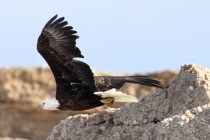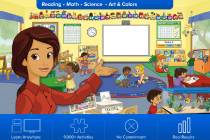Mathematical models aim to chart the path of the new coronavirus in the U.S. and Nevada, but the outcomes can vary wildly depending on basic assumptions about the disease.
Science and Technology
The approximately $1 billion satellite is the sixth and final one in the U.S. military’s Advanced Extremely High Frequency series.
You’re washing your hands countless times a day to try to ward off the coronavirus, but what about your phone?
Netflix agreed Thursday to reduce its streaming quality in Europe over fears that it would overburden internet providers there.
Chris Cassidy said he expects to say goodbye in Russia to his wife, Julie, on Friday, three weeks earlier than planned.
He was in NASA’s fifth astronaut class, chosen in 1966, retired from NASA in 1975 and went to work for a few aerospace companies.
History buff helps Las Vegas visitors, residents learn about the blasts from our past at the National Atomic Testing Museum.
The company did not say when the new set of seats would be released or the actual cost. The initial seats were sold at $250,000 apiece.
MGM Resorts International has released a statement confirming the company was hacked last summer, with certain information — including some guests’ drivers license and passport information — stolen from a cloud server.
Samsung on Tuesday unveiled a new foldable phone, the Galaxy Z Flip, its second attempt to sell consumers on phones with bendable screens and clamshell designs.
It was discovered on Feb. 18, 1930, by self-taught astronomer Clyde Tombaugh at the Lowell Observatory in Flagstaff, Arizona, some 250 miles from Las Vegas.
Though the upper basin snowpack is about 14 percent above average so far, dry soils have experts forecasting that flows to Lake Powell will fall 20 percent below average.
When counting bald eagles, technology takes a back seat to old-fashioned fieldwork. At Lake Mead National Recreation Area, that means biologists, binoculars and boats.
Amit Yoran, CEO of security firm Tenable, said it is “exceptionally rare if not unprecedented” for the U.S. government to share its discovery of such a critical vulnerability with a company.
But critics question whether these programs can narrow the early education gap between well-to-do urban residents and low-income families and rural residents.





















